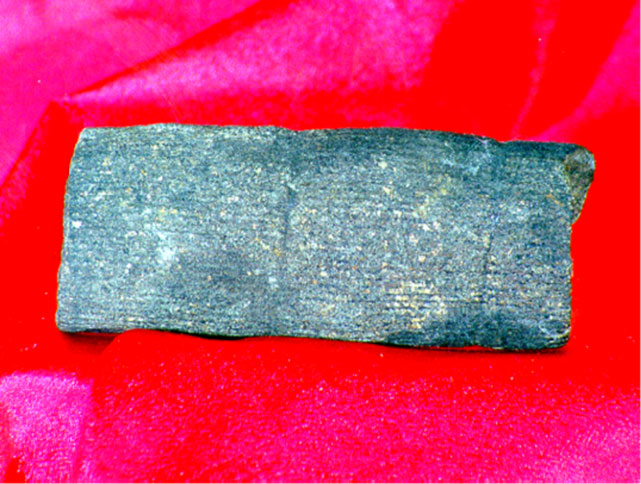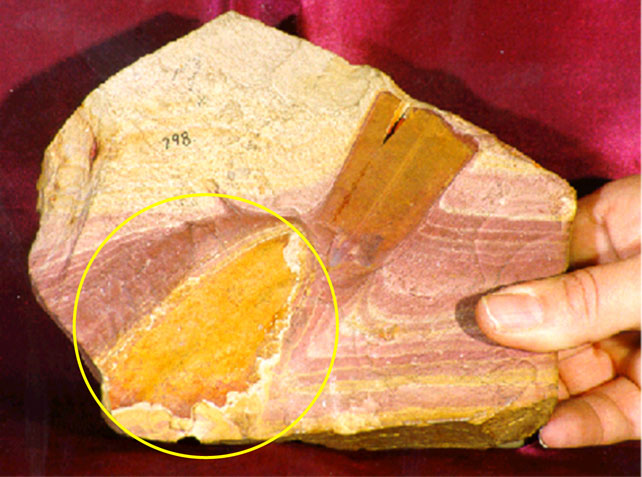
Plants (Part 2)
• Horsetails and scouring rushes are modern plants that belong to a group called sphenopsids. Extinct sphenopsids are also common in late Paleozoic coal beds. The photograph below shows a Late Paleozoic sphenopsid from southwestern Virginia coal fields. These plants have existed since the Devonian.

Sphenopsid (Photograph by Parvinder Sethi)
• Ferns and seed ferns are common fossils. They are abundant in ancient rocks and modern environments. They are especially common in late Paleozoic coal beds. The photograph below shows a late Paleozoic fern that was found in the coal fields of southwestern Virginia. Ferns have existed since the Devonian.

Fern (Photograph by Parvinder Sethi)
Extinct seed ferns (below) like this one (circled) are common in late Paleozoic rocks on the southern continents (Africa, South America, Antarctica, India, and Australia). This seed fern, known as Glossopteris, has been used as evidence to support the theory of continental drift.

Glossopteris (Photograph by Parvinder Sethi)
• Gymnosperms are seed-bearing plants that include conifers and ginkgoes. Ginkgoes are common Mesozoic fossils.
• Angiosperms, or flowering plants, are the most abundant and advanced land plants at present. Their fossils are common in Mesozoic and Cenozoic rocks.